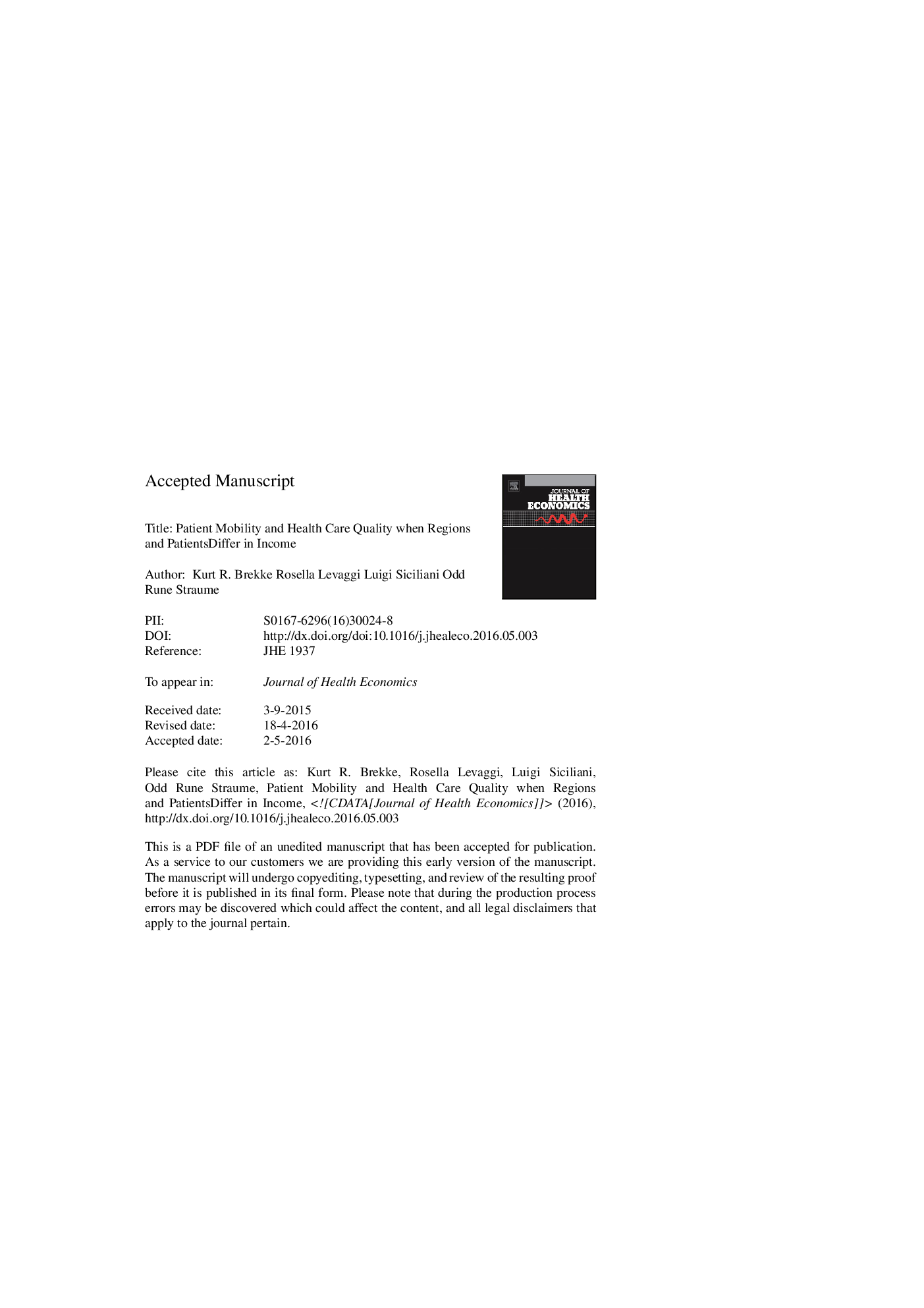| Article ID | Journal | Published Year | Pages | File Type |
|---|---|---|---|---|
| 5100822 | Journal of Health Economics | 2016 | 45 Pages |
Abstract
We study the effects of cross-border patient mobility on health care quality and welfare when income varies across and within regions. We use a Salop model with a high-, middle-, and low-income region. In each region, a policy maker chooses health care quality to maximise the utility of its residents when health care costs are financed by general income taxation. In equilibrium, regions with higher income offer better quality, which creates an incentive for patient mobility from lower- to higher-income regions. Assuming a prospective payment scheme based on DRG-pricing, we find that lower non-monetary (administrative) mobility costs have (i) no effect on quality or welfare in the high-income region; (ii) a negative effect on quality but a positive effect on welfare for the middle-income region; and (iii) ambiguous effects on quality and welfare for the low-income region. Lower monetary mobility costs (copayments) might reduce welfare in both the middle- and low-income region. Thus, health policies that stimulate cross-border patient mobility can be counterproductive when regions differ in income.
Related Topics
Health Sciences
Medicine and Dentistry
Public Health and Health Policy
Authors
Kurt R. Brekke, Rosella Levaggi, Luigi Siciliani, Odd Rune Straume,
